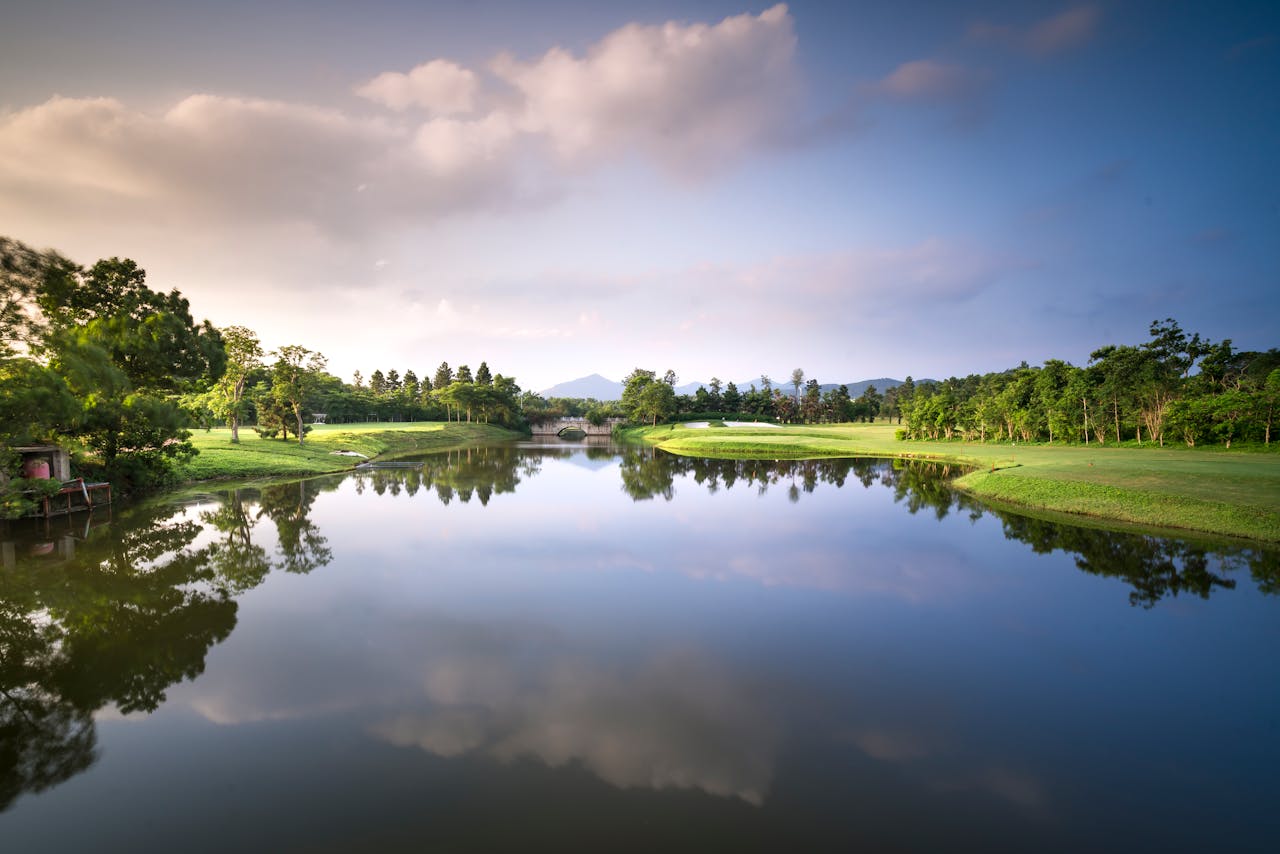Introduction
The Allure of Koi Ponds
Koi ponds have captivated garden enthusiasts and homeowners alike with their aesthetic appeal and calming presence. These aquatic havens not only enhance the visual charm of outdoor spaces but also provide a natural habitat for exquisite koi fish. The allure of koi ponds lies in their ability to transform any backyard into a peaceful sanctuary.
Advantages of Using Polyurea Liners
Polyurea liners have revolutionized koi pond construction, offering unmatched flexibility and durability. Unlike traditional liners, polyurea forms a seamless, waterproof membrane that conforms to any shape or size. This resilience ensures your pond withstands the test of time, while also safeguarding against leaks and cracks.
Thesis Statement
In this comprehensive guide, we will explore the step-by-step process of building a polyurea koi pond. From planning and preparation to stocking and maintenance, each aspect will be covered to help you create a stunning and enduring aquatic environment.
Planning Your Polyurea Koi Pond
Determining Size and Location
The first step in building a polyurea koi pond is deciding on the size and location. Consider your available space, the number of koi you plan to keep, and accessibility for maintenance. A well-chosen location will complement your landscape and enhance the overall ambiance.
Balancing Aesthetics and Functionality
While the pond should be visually appealing, functionality is equally important. Think about water circulation, filtration needs, and proximity to electrical sources. By balancing aesthetics with practicality, you can create a pond that is both beautiful and functional.
Navigating Zoning Regulations
Before you start digging, it’s crucial to research local zoning regulations and obtain necessary permits. These regulations vary widely, so understanding the guidelines will save you legal hassles down the road.
Choosing the Right Polyurea Liner
Benefits of Polyurea Liners
Polyurea liners offer several benefits for koi ponds, including flexibility, longevity, and resistance to punctures. This material is ideal for creating a seamless barrier that adapts to the pond’s shape, ensuring no weak points where leaks might occur.
Types of Polyurea Liners
There are different types of polyurea liners available, each suited to specific applications. Some are spray-applied, while others come in sheets. Choosing the right type depends on your pond’s design and your preference for application methods.
Factors to Consider
When selecting a polyurea liner, consider factors like thickness, UV resistance, and adhesion properties. A thicker liner will generally offer more durability, and UV resistance is crucial if your pond will be exposed to direct sunlight.
Preparing the Pond Site
Excavating and Grading
Proper excavation and grading are critical to the success of your koi pond. Excavate to the desired depth, keeping in mind that koi need varying depths for swimming and resting. Ensure the bottom and sides are smooth to prevent damage to the liner.
Creating a Solid Base
A solid, level base is essential for liner installation. Remove any sharp objects or debris, and compact the soil to create a stable foundation. This preparation will prevent shifting and erosion over time.
Installing a Pond Underlayment
To protect the liner from punctures, use a pond underlayment. This protective layer acts as a cushion between the liner and the ground, extending the life of your polyurea liner.
Installing the Polyurea Liner
Preparing for Installation
Before installation, ensure the liner is clean and free of any contaminants. Follow the manufacturer’s instructions for preparing the surface to ensure proper adhesion.
Placing the Liner
Carefully place the polyurea liner in the pond excavation, smoothing out any wrinkles. Start from the bottom and work your way up the sides, allowing the liner to conform to the shape of the pond.
Securing the Edges
Secure the liner by anchoring the edges with rocks or other materials. This step prevents the liner from shifting and helps create a natural-looking pond edge.
Adding Water and Filtration
Filling the Pond
Once the liner is secured, it’s time to fill the pond with water. Use a garden hose or pump to gradually add water, monitoring for any leaks or shifts in the liner.
Installing Filtration Systems
A good filtration system is crucial for maintaining water quality. Combine biological, mechanical, and UV filtration to remove debris, control algae, and support beneficial bacteria.
Maintaining Water Quality
Regularly test the water’s parameters, including pH, ammonia, and nitrite levels. Maintaining water quality is essential for the health of your koi and the overall success of your pond.
Stocking Your Koi Pond
Choosing Koi Species and Sizes
Select koi species and sizes based on the size of your pond and personal preference. Ensure there’s enough space for each fish to grow and thrive without overcrowding.
Acclimating Koi to the Pond
Introduce your koi to the pond gradually. Allow them to acclimate to the water temperature and chemistry to reduce stress and increase their chances of thriving.
Ensuring Koi Health
Monitor your koi’s health regularly. Look for signs of illness or stress and take action promptly. Healthy koi are active, with vibrant colors and smooth swimming motions.
Landscaping and Decor
Adding Plants and Rocks
Enhance your pond’s natural appearance with aquatic plants and rocks. Not only do they provide aesthetic appeal, but they also contribute to the pond’s ecosystem by offering shelter and oxygenation.
Incorporating Water Features
Consider adding waterfalls or streams for both beauty and aeration. Moving water prevents stagnation and helps maintain oxygen levels, which is beneficial for the koi.
Decorative Elements
Add decorative elements like statues, lighting, or garden bridges to personalize your pond. These touches can make your pond a focal point in your garden, inviting admiration from visitors.
Koi Pond Maintenance
Regular Water Testing
To ensure a healthy environment, conduct regular water testing. Adjust chemicals as needed to maintain optimal conditions for your koi.
Cleaning and Debris Removal
Regularly clean the pond by removing leaves, twigs, and other debris. Consider using a skimmer or net to make this task easier and keep the water clear.
Feeding and Monitoring Koi
Feed your koi a balanced diet, and monitor their behavior and appetite. A lack of appetite or unusual behavior can indicate health issues that should be addressed promptly.
Winterizing Your Koi Pond
Preparing for Cold Weather
Winterizing your koi pond involves several steps to protect it from freezing temperatures. Reduce feeding as water temperatures drop and ensure the pond doesn’t freeze over completely.
Protecting Koi in Winter
To protect koi during winter, consider installing a pond heater or deicer. These devices keep a small area of the pond ice-free, allowing for gas exchange.
Maintaining Water Quality in Winter
Despite reduced activity, maintaining water quality is crucial in winter. Test parameters regularly and make adjustments to ensure a stable environment for your koi.
You May Also Like: NIS Agent Reincarnated as a Genius Actor: An Overview
Conclusion
Building a polyurea koi pond is a rewarding project that brings beauty and tranquility to your outdoor space. By following this comprehensive guide, you can create a pond that not only enhances your garden’s aesthetic but also provides a healthy, thriving environment for your koi. With careful planning, choice of materials, and regular maintenance, your polyurea koi pond will be a cherished feature for years to come.
FAQs
- What are the benefits of building a polyurea koi pond?
Building a polyurea koi pond offers durability, flexibility, and a seamless waterproof membrane that prevents leaks and cracks, ensuring a long-lasting aquatic environment.
- How do I choose the right polyurea liner?
Select a liner based on its thickness, UV resistance, and adhesion properties. Consider whether you prefer a spray-applied or sheet liner for your pond’s design.
- What type of filtration system is best for a koi pond?
A combination of biological, mechanical, and UV filtration is best for maintaining water quality, controlling algae, and supporting beneficial bacteria in a koi pond.
- How do I prepare my koi pond for winter?
Winterize your koi pond by reducing feeding, installing a pond heater or deicer, and maintaining water quality to protect your koi from freezing temperatures.
- Can I add decorative elements to my koi pond?
Yes, adding decorative elements like plants, rocks, waterfalls, and garden bridges can enhance the aesthetic appeal of your koi pond and create a natural environment.











